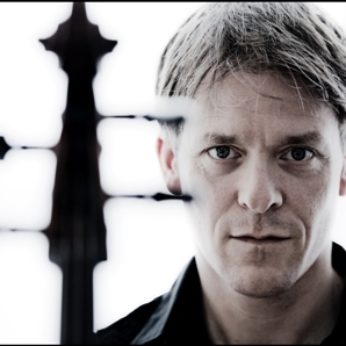Composer: Zoltán Kodály (b. 1882 - d. 1967)
Performance date: 29/06/2014
Venue: St. Brendan’s Church
Composition Year: 1914
Duration: 00:24:48
Recording Engineer: Richard McCullough, RTE
Instrumentation Category:Duo
Instrumentation Other: vn, vc
Artists:
Alban Gerhardt -
[cello]
Gergana Gergova -
[violin]

Kodály was a contemporary and fellow-student of Bartók and
shared his obsession with Hungarian folk music.
They both toured the countryside studying, transcribing and recording
hundreds of folksongs and, in their different ways, they both incorporated
their resulting sense of the nation’s musical speech into their writing. Kodály
later founded the Institute of Folk Music Research of the Hungarian Academy of
Science, which now has categorised records of over 100,000 folksongs of the
people of Hungary and of surrounding and related countries.
Not surprisingly,
Kodály’s compositional output is dominated by around 150 works for
unaccompanied chorus, but his fascination with the intonation and rhythms of
language translated into a small but remarkable body of instrumental writing
which displays a preoccupation with enabling instruments not only to sing his ideas
but to speak them in an eloquent kind of recitative.
This Duo was written
in 1914. At the outbreak of war, Kodály was at Zermatt in Switzerland and his
journey back to Budapest was interrupted by the altered priorities of wartime
and he found himself writing the first movement in a school music exercise book
in the small Tyrolean town of Feldkirch. The music reflects the drama of his
situation alongside the breath-taking splendour of the mountains. This is truly
human music, with a sense of nobility and simplicity and clarity of texture in
which every syllable has expression and meaning. It is also music whose free
melodies have little to do with the canons of sonata form, music whose free
spirit and unusual combination of instruments soars in a world of its own
The first movement
finds us caught up in a vibrant dialogue in which the two voices alternately
accompany and comment on the other’s thoughts; disagreements begin to emerge
and are voiced with increasing passion until a resolution leads to a restatement
of the opening material. This time we
are led to the close of the movement with a quiet sense of optimism.
The singing opening
of the Adagio creates an aura of eerie beauty that gives way to an impassioned
central section in which the conflicts of the first movement arise again; but
soon the instruments reunite and sing together through a series of varied
recitatives until the opening song reappears. The movement draws to an end with
a sense of wearied resignation. The last movement is full of snatches of
folk-song, sometimes with bustling, vigorous accompaniment, sometimes presented
with a stark simplicity. This unique work with its many moods ends with a
presto, climactic flourish.
Copyright © 2025 West Cork Music. All rights reserved.
Designed and developed by Matrix Internet